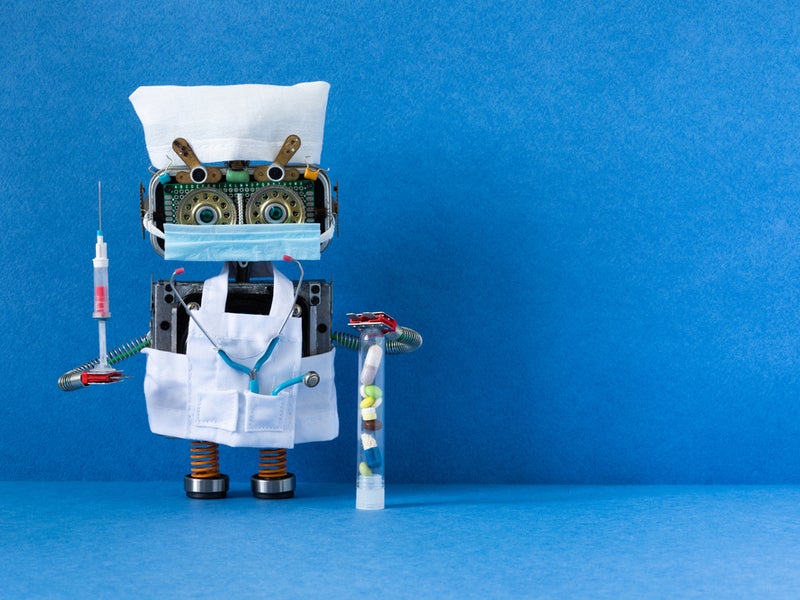
Some people are more comfortable with needles than others. Being sent for a routine blood test may fill you with fear or be something you shrug off without a second thought. No matter how you feel about it, blood testing is the most common medical procedure performed worldwide. But just because it’s common doesn’t mean it’s easy.
Phlebotomists often fail to get a sample on the first try, especially if it’s hard to find a vein, which it often is – particularly in children or elderly patients. In fact, health professionals fail to draw blood in 27% of patients without visible veins, 40% of patients without palpable veins and 60% of emaciated patients. This can cause discomfort and mean the procedure takes longer than it needs to and requires more staff.
Venipuncture (the technical term for drawing blood for a sample) is also among the leading causes of injury to healthcare professionals. The average phlebotomist performs 10,000 venipunctures annually and the median needlestick injury rate is one in 10,000. This means a phlebotomist could experience one accidental percutaneous blood exposure every year.
“We’re talking about the most common procedure, but it’s also the most common way that you get patients and clinicians injured,” points out physician and bioengineer Martin Yarmush of Rutgers University in New Jersey.
Yarmush has been thinking about this problem since the early 80s when he was still in medical school. A paediatrics rotation opened his eyes to the hurdles in blood testing.
“They were trying to get blood from a child and the nurses were having a terrible time,” he recalls. “It was a half-hour ordeal until they finally called the paediatric surgeon to cut the skin down and get blood through the blood vessel. I figured there’s got to be a better way of doing this. The idea incubated within me for 25 years.”
How well do you really know your competitors?
Access the most comprehensive Company Profiles on the market, powered by GlobalData. Save hours of research. Gain competitive edge.

Thank you!
Your download email will arrive shortly
Not ready to buy yet? Download a free sample
We are confident about the unique quality of our Company Profiles. However, we want you to make the most beneficial decision for your business, so we offer a free sample that you can download by submitting the below form
By GlobalDataA crystal-clear target
In this case, ‘better’ means automated. Years of work in the Yarmush Laboratory have led to the development of a robotic blood-sampling device. The robot has been designed to prevent stressful multiple blood-draw attempts, bruising, and other injuries. It even includes a module that can analyse the sample using lab-on-a-chip microfluidics, which could mean patients have shorter waits for diagnostic results in the future.
The research team drew on inspiration from an early blood-sampling device developed for the military that used near-infrared light to visualise veins. It helped medics in the field who were trying to help injured soldiers at night. But infrared only builds up part of the picture. For three-dimensional information, Yarmush’s device uses ultrasound too.
“The near-infrared gives you a map of the veins so you can figure out your target,” he explains. “Once the computer identifies the target, there’s an ultrasound camera that comes down and gives you finer imaging.”
The extra detail creates a more precise target, so it’s not just the vein, but the lumen inside it that the robot is directed to.
The team have developed two devices, one at full scale and one in miniature. The larger table-top device would be best suited for a clinical laboratory and patients who are mobile. The miniature version, meanwhile, could work for patients in hospital beds, nursing homes or for in-field military applications.
“The simpler device doesn’t have the near-infrared imaging, it just has the ultrasound, because we wanted to pare it down, make it lighter and more cost-effective,” Yarmush explains.
Not a replacement for a trained clinician
But how does the full-size device compare to a phlebotomist? Remarkably, in the first human clinical trial of the blood-drawing robot, it was found to perform with comparable success rates to those listed for medical professionals. The study, published in the journal Technology, found the device performed comparably or exceeding clinical standards 87% of the time. It was tested on 31 volunteers. But larger-scale trials with several hundred participants are now in the works.
“At the moment, I would say we’re as good as what’s published in the literature or better,” says Yarmush. “We haven’t had a side-by-side comparison. That’s for the future.”
Whether a robot can ever truly replace a highly trained phlebotomist remains to be seen. Yarmush admits it’s more likely the device will be an aid rather than a substitute, freeing up healthcare professionals to spend more time treating patients. But it could also lead to earlier diagnosis and treatment, with the machine performing the analysis straight away rather than patients waiting days for tests to come back from the laboratory.
“There’s a certain amount of agony when a patient comes in and doesn’t feel well and they’re waiting for tests to come back,” acknowledges Yarmush. “This would streamline and decentralise the whole blood-testing process so it could be done in an individual doctor’s office, and patients can be treated based on the result.”
But to get to that point will require even more hard work. The prototype device will need to go through rigorous testing and safety checks before it can be submitted to regulatory agencies for approval. And alongside science and engineering expertise, investors who are prepared to back the project for the long haul will be crucial to the device’s success, Yarmush admits.
“This really requires somebody willing to invest in it who’s got the same passion that I have, and who wants to see the final product rather than the dollar signs.”



